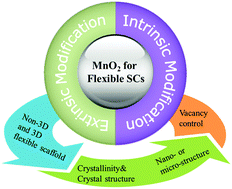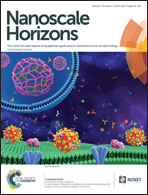MnO2 nanomaterials for flexible supercapacitors: performance enhancement via intrinsic and extrinsic modification
Abstract
Increasing power and energy demands for next-generation portable and flexible electronics have raised critical requirements (flexibility, stretch-ability, environmental friendliness, lightweight, etc.) for the energy storage devices. Flexible supercapacitors (SCs), as one of the most promising next-generation energy storage devices, have stimulated intensive interest owing to their outstanding features including small size, low weight, ease of handling, excellent reliability, and high power density. Manganese oxide (MnO2), has attracted much interest in the development of flexible SCs with high electrochemical performance. Yet, the poor electronic and ionic transport in MnO2 electrodes still limits its promotion in practical applications. This review aims to describe the recent progress in the application of MnO2 materials in the development of flexible SCs and summarizes the intrinsic modification of MnO2via crystallinity, crystal structure, and oxygen vacancy introduction and the extrinsic modification of MnO2via non-three-dimensional (3D) and 3D flexible conductive scaffolds for high performance flexible SCs. Moreover, we also discuss briefly on the current challenges, future directions, and opportunities for the development of high-performance MnO2 based flexible SCs.


 Please wait while we load your content...
Please wait while we load your content...